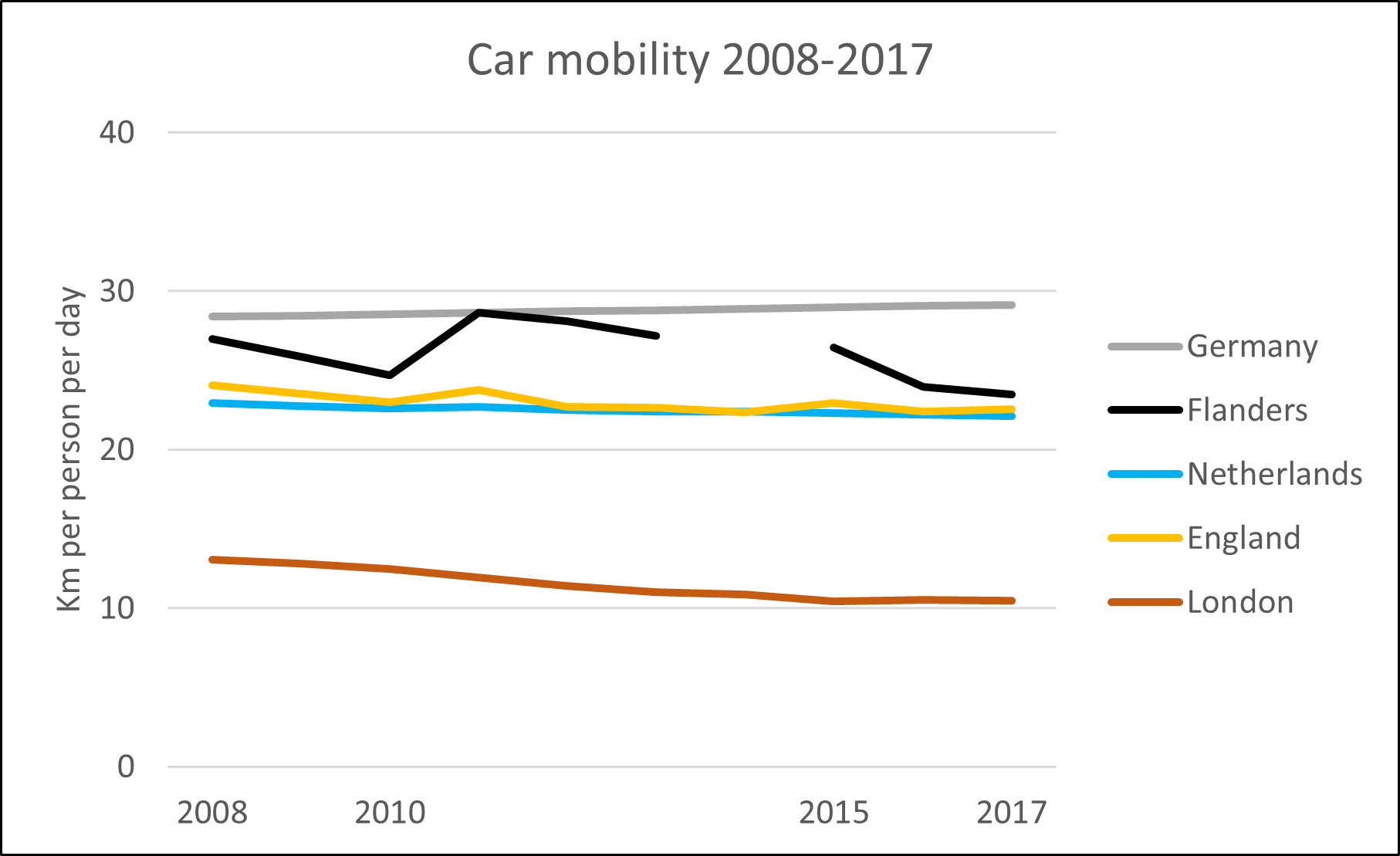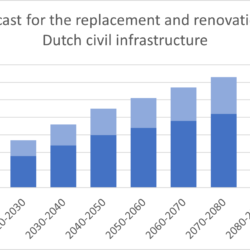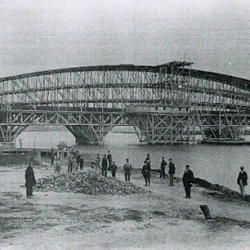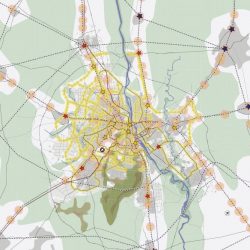Last year the Dutch court in the Hague ordered Shell to reduce its CO2 emissions by at least 45% by the end of 2030[1]. The ruling includes emissions from the burning of the fuels it sells in cars, trucks, ships… Read More
Official projections from the Dutch government for the growth in car traffic are too high. The government recognized that car mobility grew slower than expected. Therefore, they almost halved the official growth projection in 2021, only four years after their previous forecast. The graph below shows both the outdated and recent projections for car traffic per inhabitant, in high and low variants. The reason that the official Dutch forecasts for the growth in car traffic are too high, is that the models they use do not sufficiently incorporate the limits in total travel time. A large swath of people travels on average 1.1 hour a day, of which in Western-European countries about half an hour by car, as driver and passenger combined. Based on this regularity, I made a forecast for the volume of car mobility 2010-2050 in my book ‘New mobility – beyond the car era’. This projection is also shown in the graph. I regard the high variant of the recent official forecast not realistic, because it does not comply with trends in the time spend as car driver. While between 2010 and 2017, Dutch people on average spend eight percent less time behind the wheel, the high variant expects an increase by thirty percent between 2018 and 2050. See the table for trends and projections in travel time for all main modes.
You can find more information and references in my book ‘New mobility – beyond the car era‘ and in my recent article ‘Transport urbanisation dialectic’‘. Section 3 ‘Speed determines mobility’ discusses the ‘law’ of constant travel time.
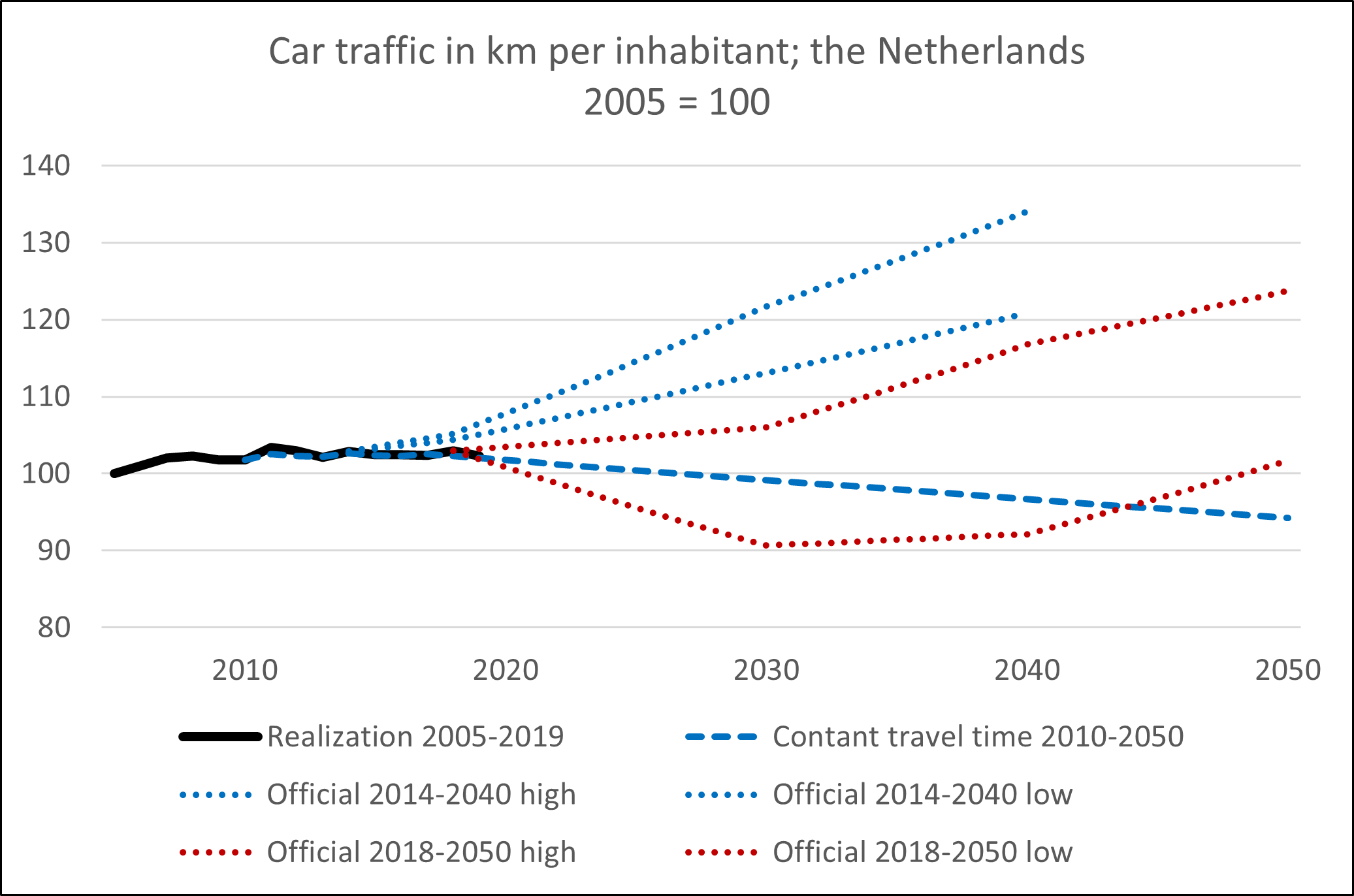
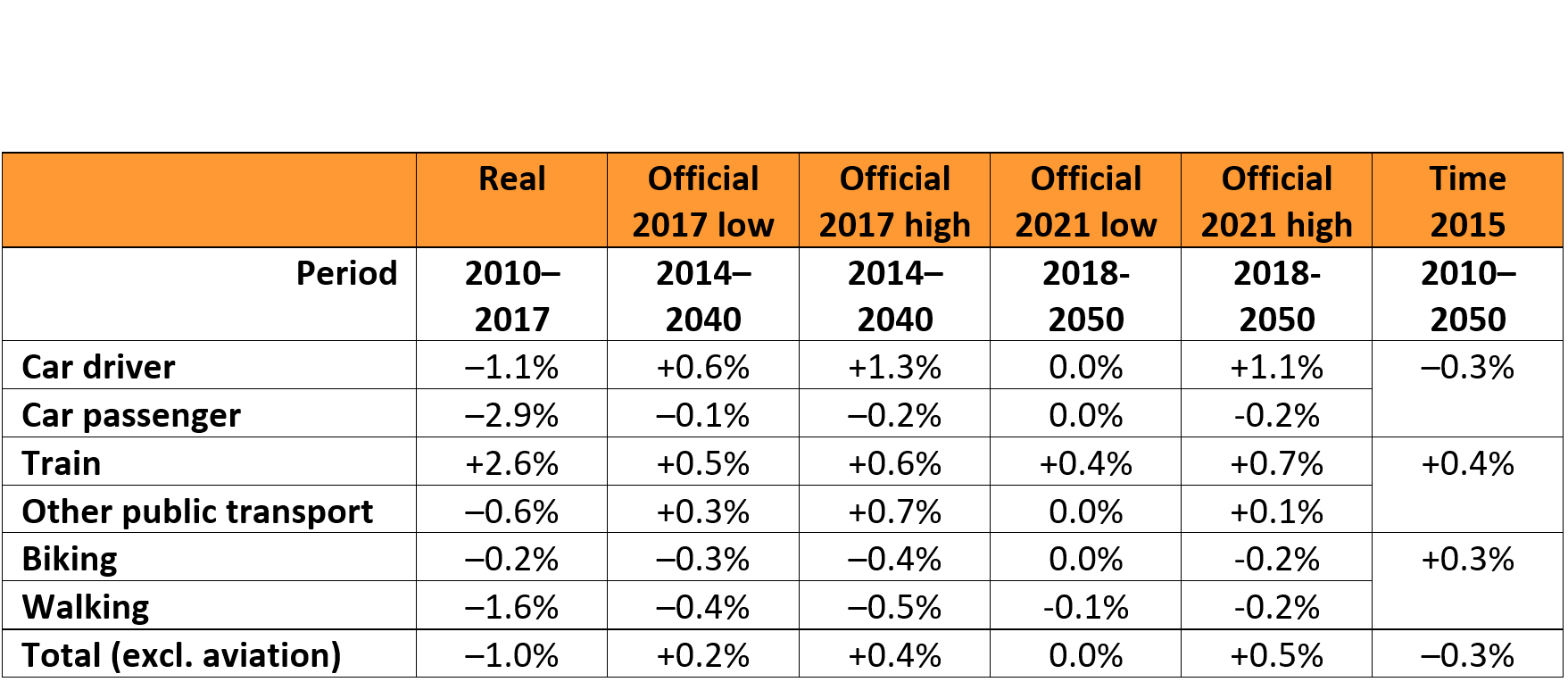
I share my assessment of the Dutch car traffic forecasts in English, because in other affluent countries with a mature motorway network, growth in car mobility will also end. The graph below shows that developments in car mobility are similar in selected West-European countries (car kilometres per day per inhabitant as driver and passenger). In these countries car growth is caused mainly by population growth and extra motorway capacity. To avoid over-expenditure on motorways, it is useful to assess whether forecasts of car traffic are consistent with the constraints posed by the travel time budget.
